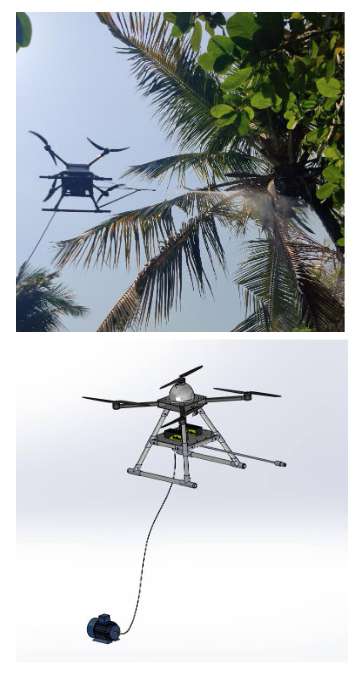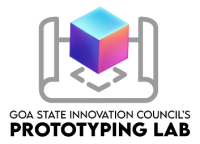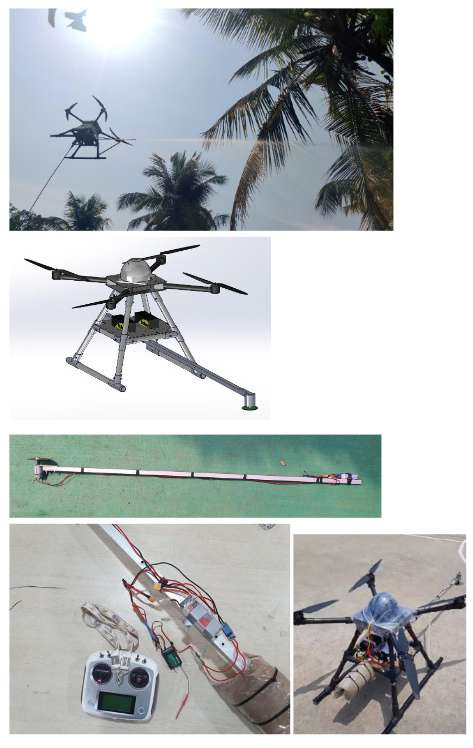Innovator Name:
Josten D’souza
Samarth Savalkar
Clive Rodrigues
Artika Vernekar
Delton Fernandes

Contact No: +91
Project Objective:
Design and Development of UAV for the harvesting of coconut using contact type and non-contact mechanisms
Contact Email:
Abstract:
Precision agriculture has seen numerous advancements in recent times, including the use of
unmanned aerial vehicles (UAVs) or drones. Drones are aircraft that operate without human pilots
and can be remotely controlled or programmed to fly autonomously using embedded systems and
onboard sensors such as GPS. In agriculture, drones have many applications, including precision
farming, monitoring crop variability, and even harvesting coconuts
Manual coconut harvesting is a dangerous and labour-intensive task, with a high risk of injury
to the climbers. Furthermore, there is a shortage of skilled coconut tree climbers, making it
challenging to harvest coconuts. To address these challenges we have designed and developed
a drone-mounted cutting mechanism, including a chainsaw or angle grinder cutter, and water
jet cutting mechanism a quadcopter configuration frame, suitable landing gear, brushless direct
current motors with propellers producing 28 kg thrust, and a lithium-polymer battery with a
capacity of 10000 mAh. A First-Person View (FPV) camera and transmitter are also installed to
monitor the cutting process, reducing the number of laborers required and the risk of injury.
The quadcopter frame is made of carbon fibre, with a base plate and landing gear, allowing for
precise harvesting of coconuts from high-raised trees. The drone’s dome-shaped covering prevents
electromagnetic field interactions and protects the electronic components from damage.
The drone can lift a payload of up to 29 kg and has a flight time estimated at 17 minutes. The
harvesting mechanism for non-contact type contains a nozzle attached to a harvesting arm
through which pressurized water is jetted to lop off the coconut, a hydra-cell pump of 200 bar is
used on ground level to supply water from the tank to the drone for harvesting of coconuts.
The contact type mechanism makes use of a grinder blade. In conclusion, the drone-mounted
coconut harvesting mechanism has several advantages over manual coconut harvesting, including
improved safety, reduced labour, and increased precision. This technology has the potential to
revolutionize the coconut industry and can be adapted for other agricultural applications, making
it an exciting development in precision agriculture. Moreover, this drone can be used for other
purposes such as spraying pesticides and firefighting by replacing the cutting mechanism with the
desired system
How prototyping lab contributed to the project:
Facilities of prototyping lab were used to build the UAV and cutting mechanism. A working
space was provided with access to prototyping resources. Access to 3d printing and laser cutting
mechanism for prototyping and making casings for the drone. Support was also provided from
people working in the prototyping lab.

